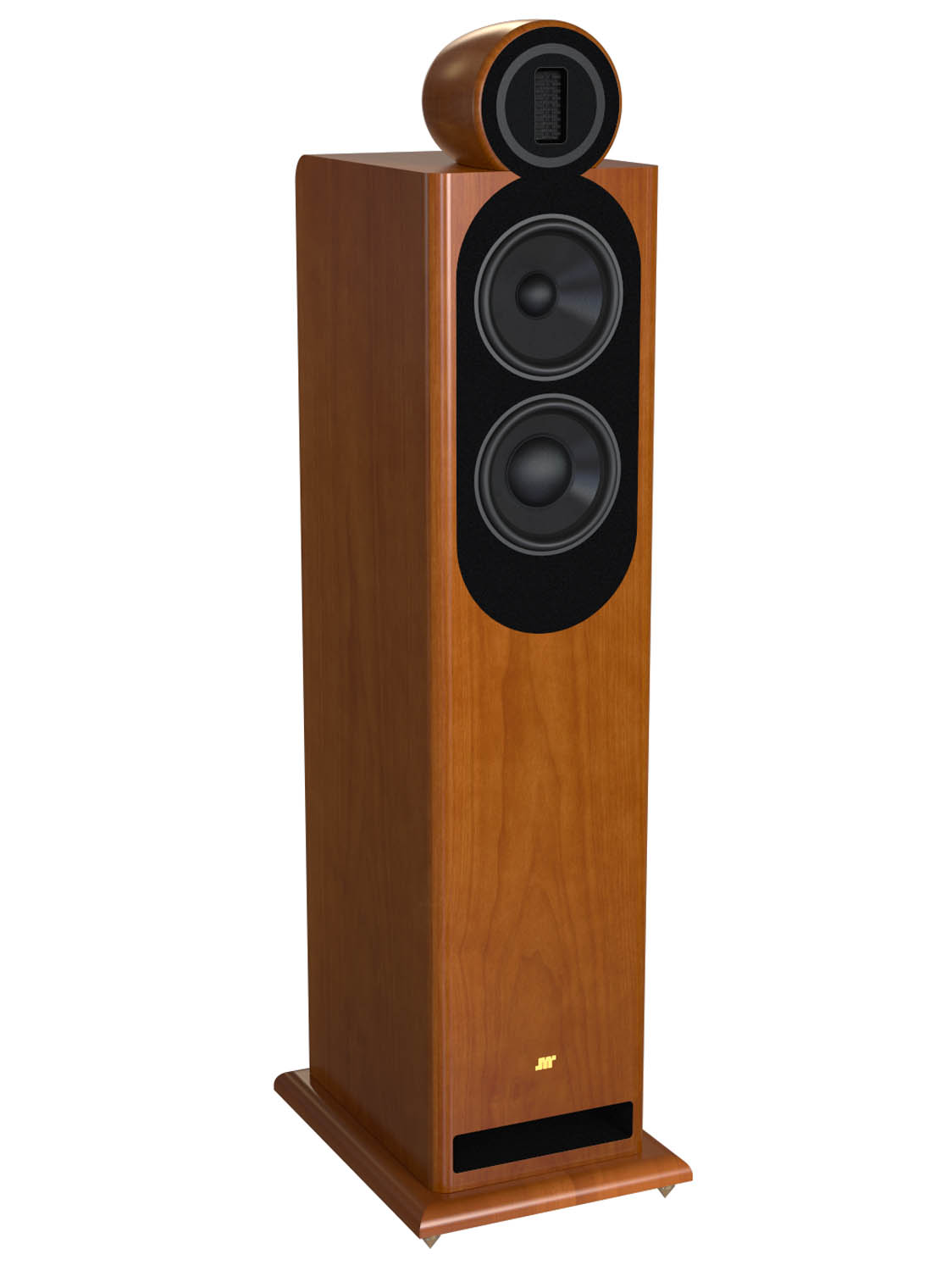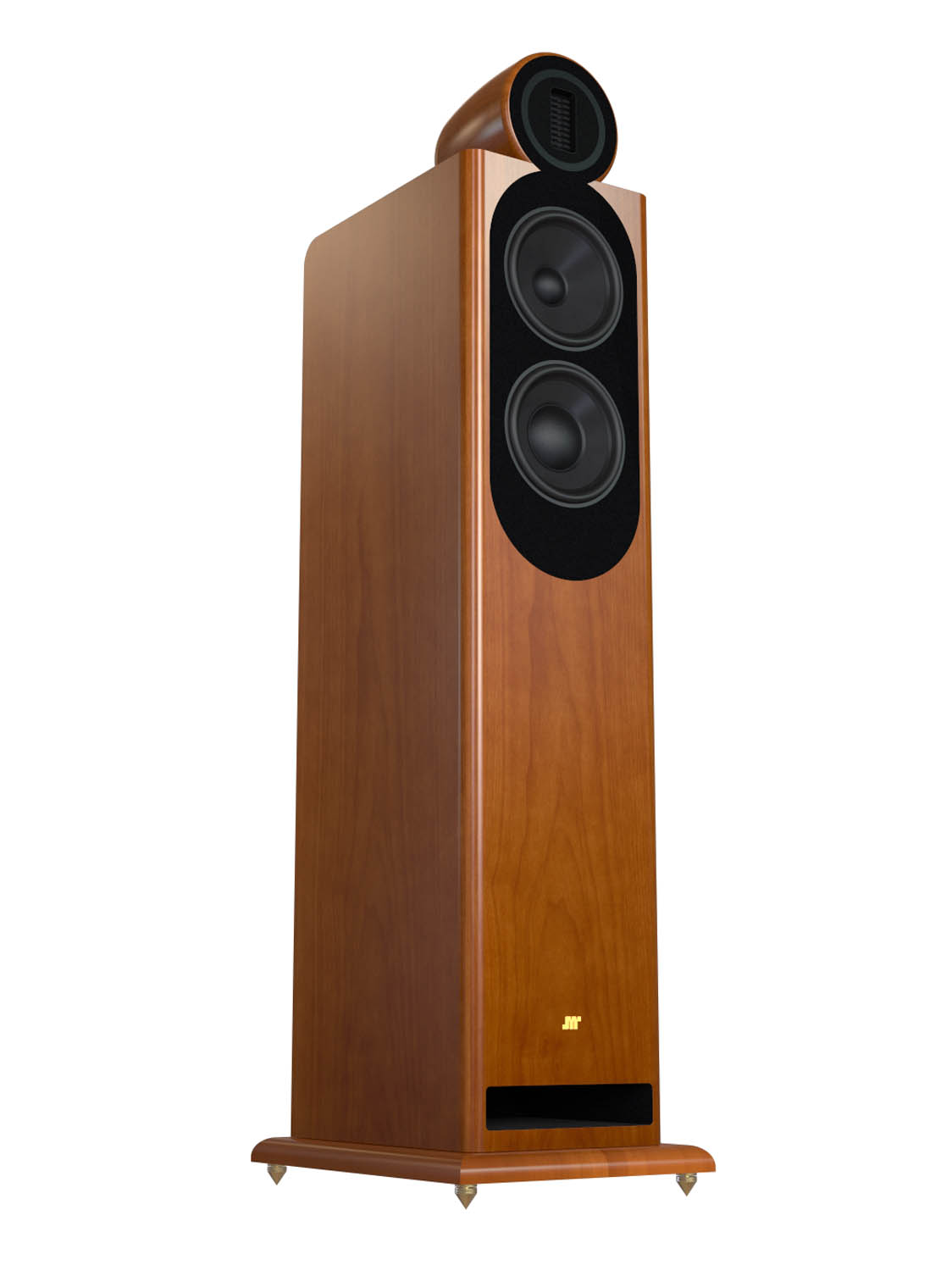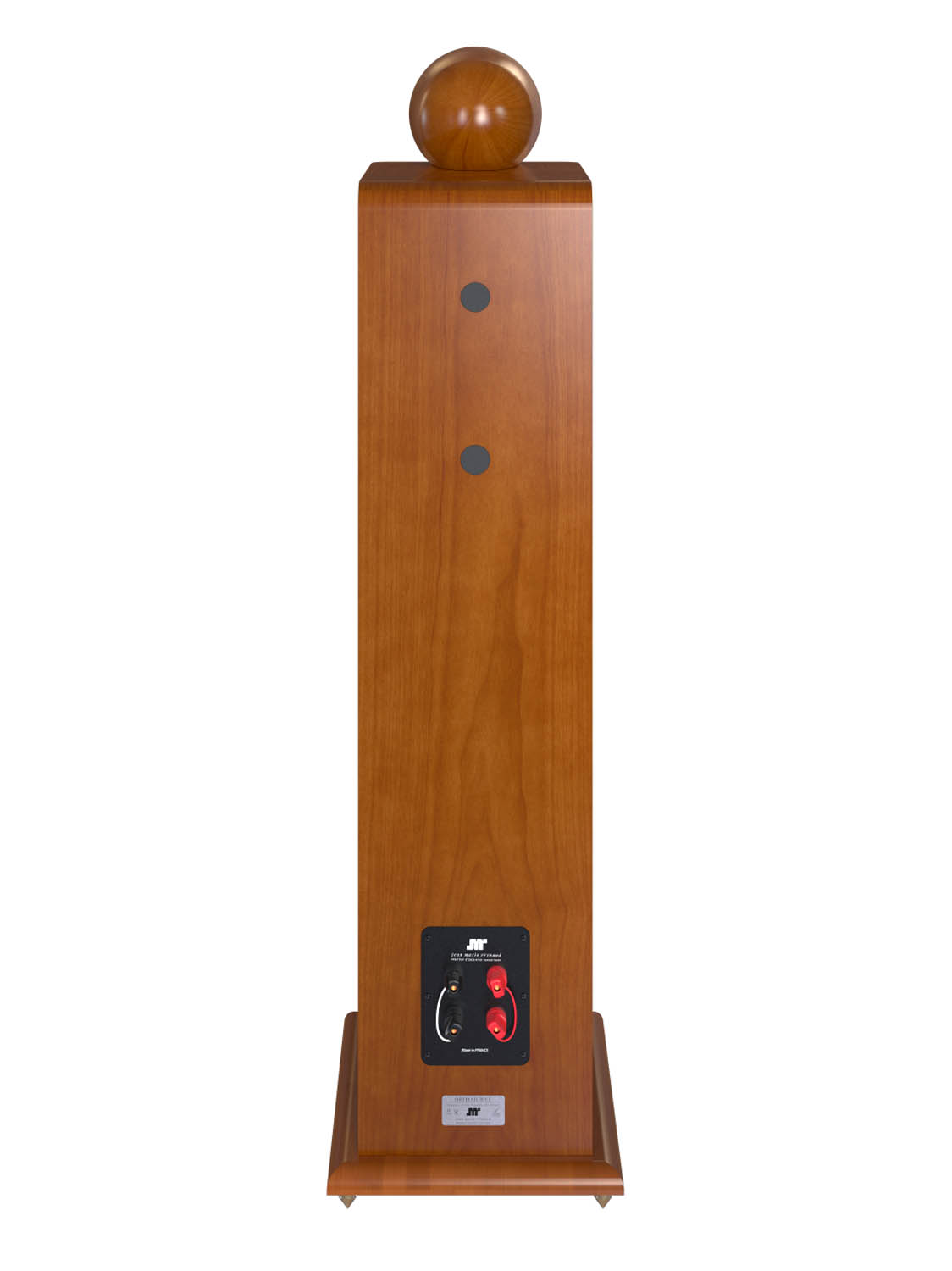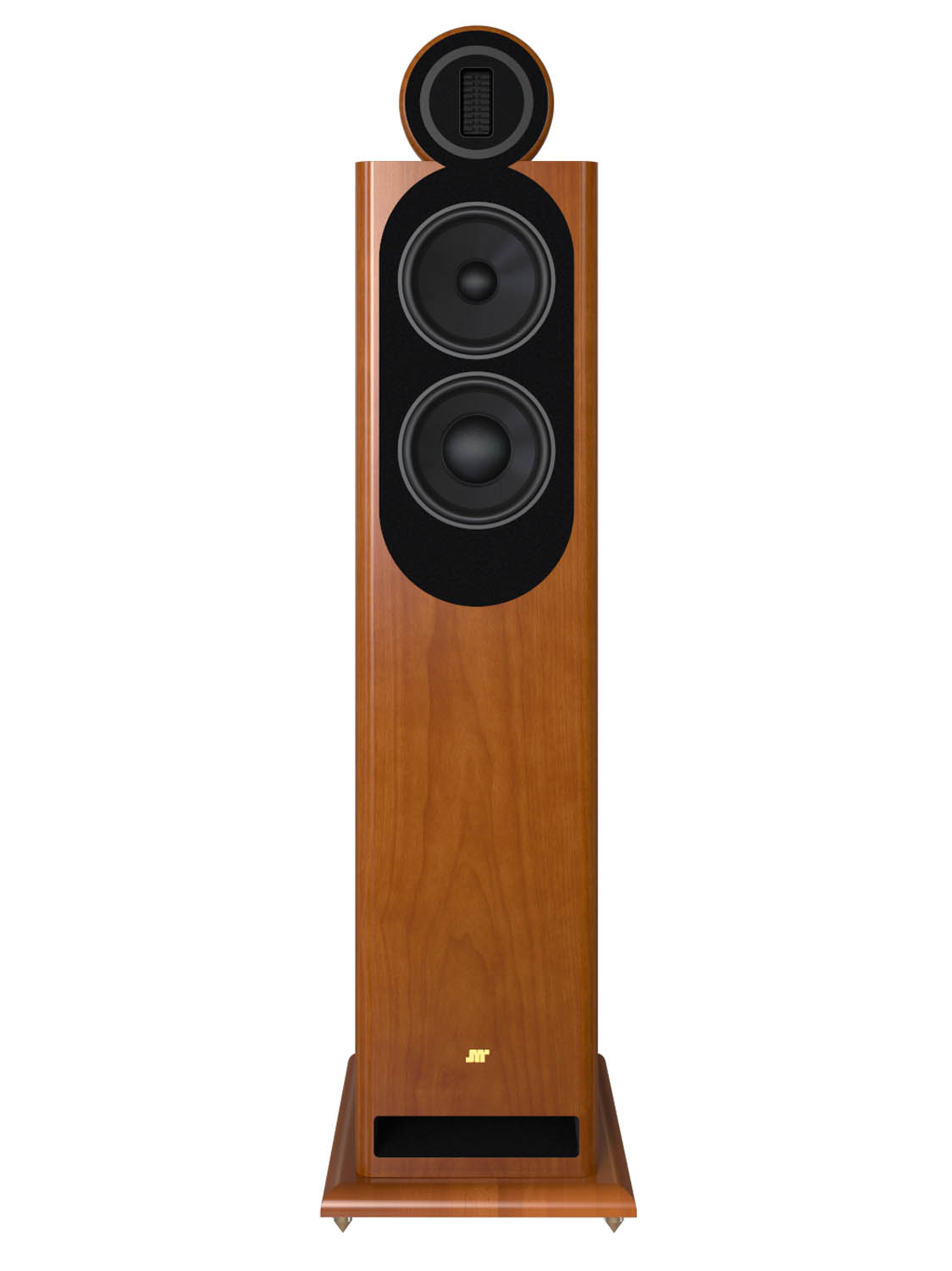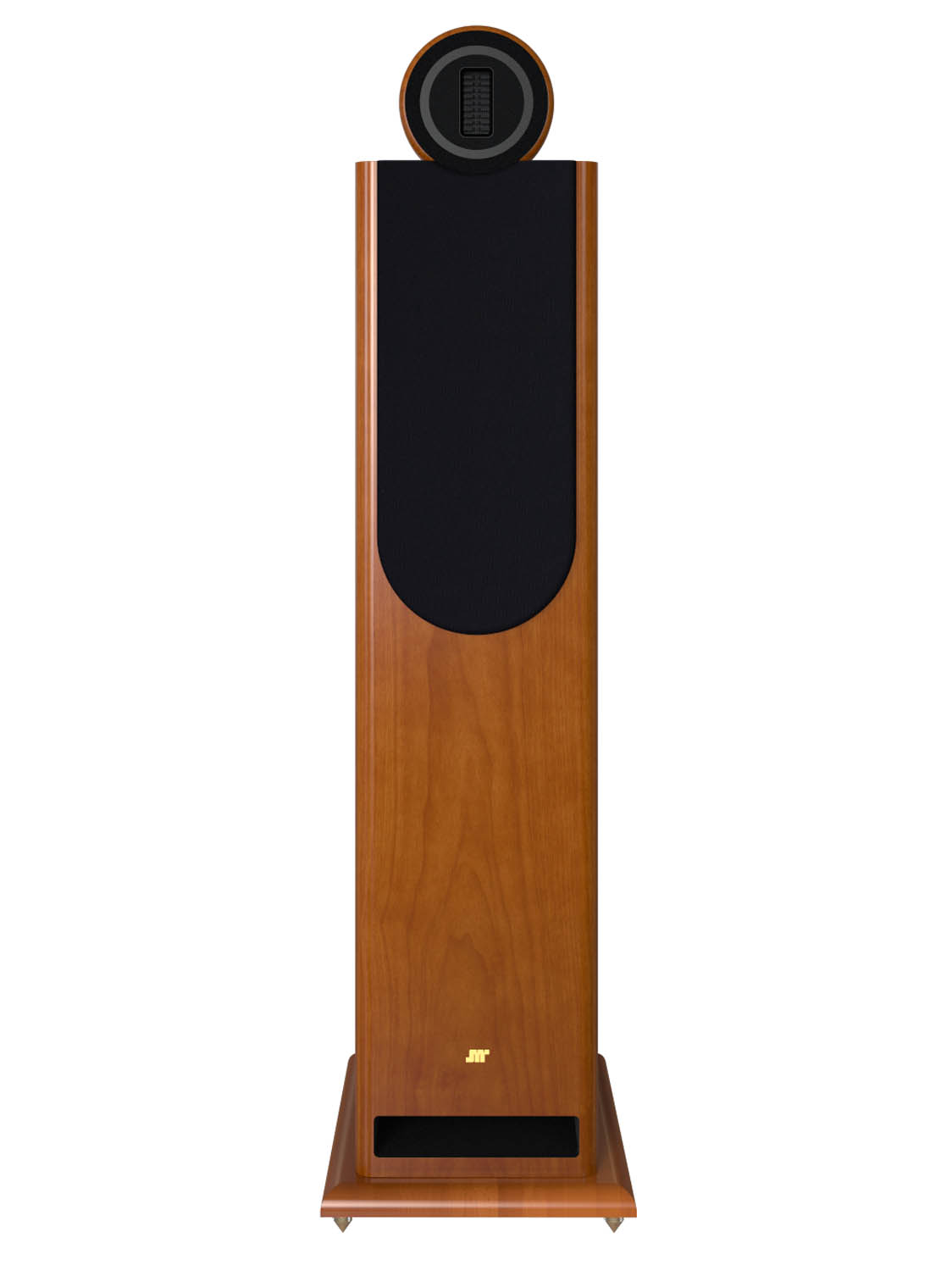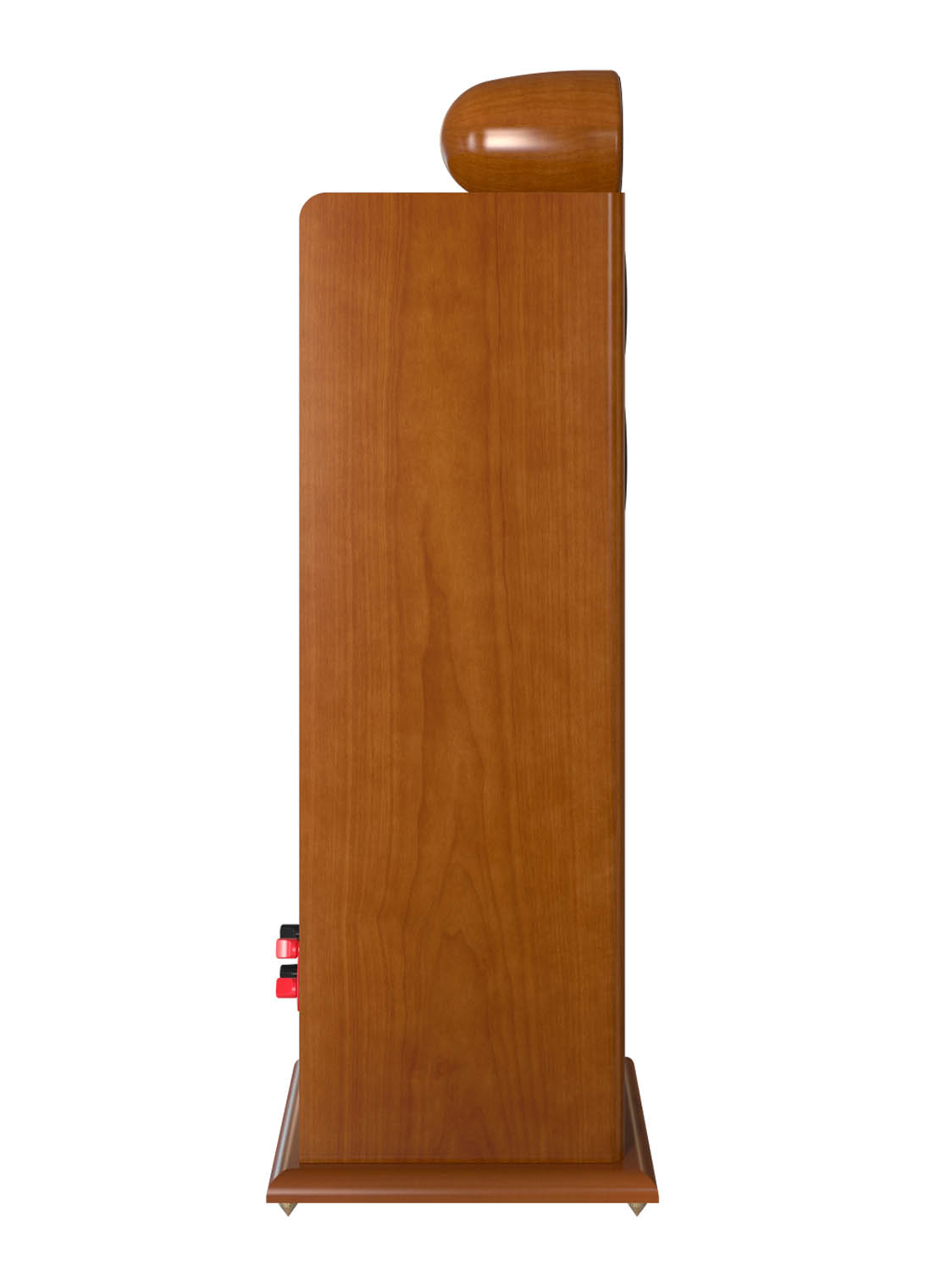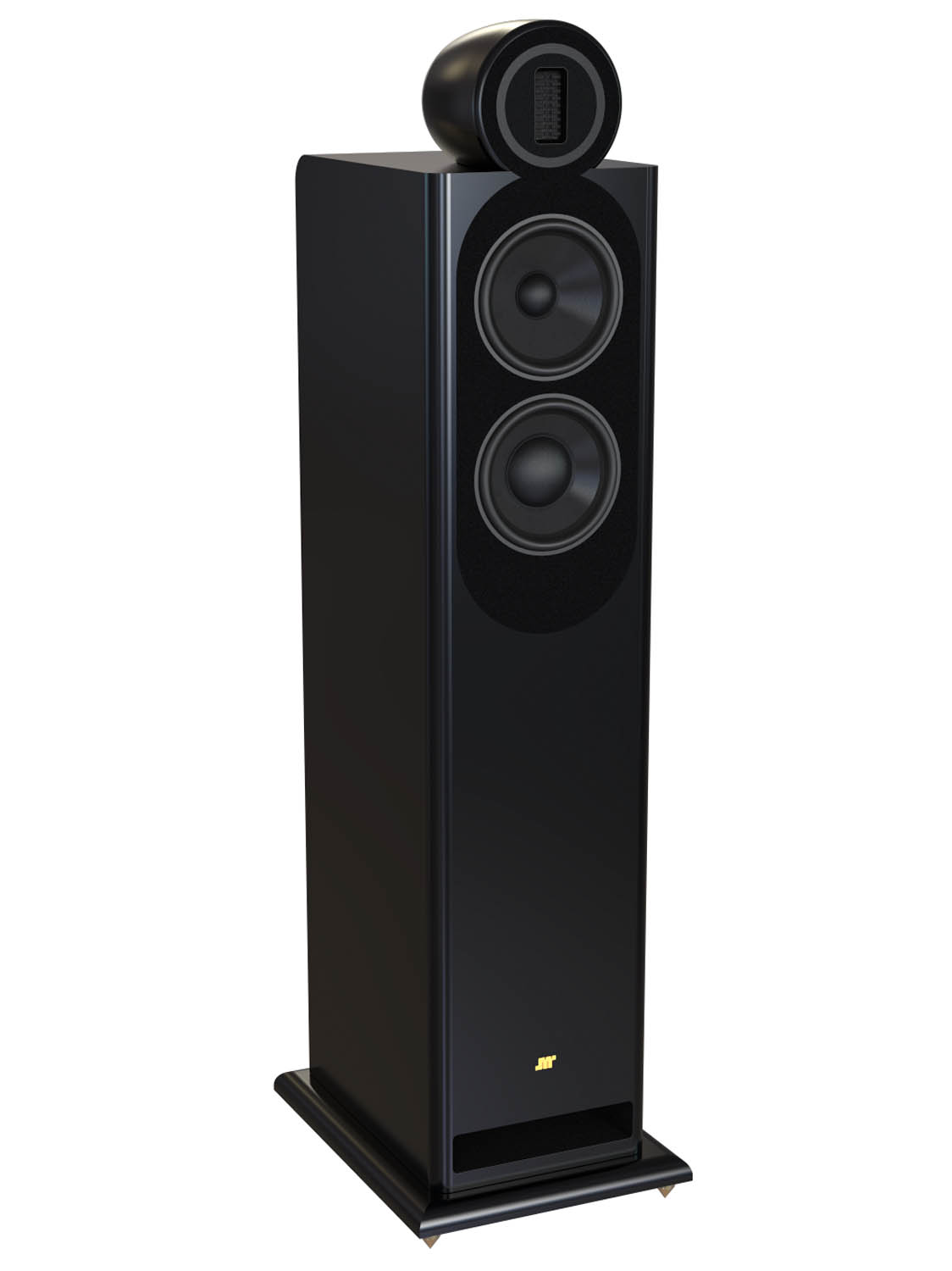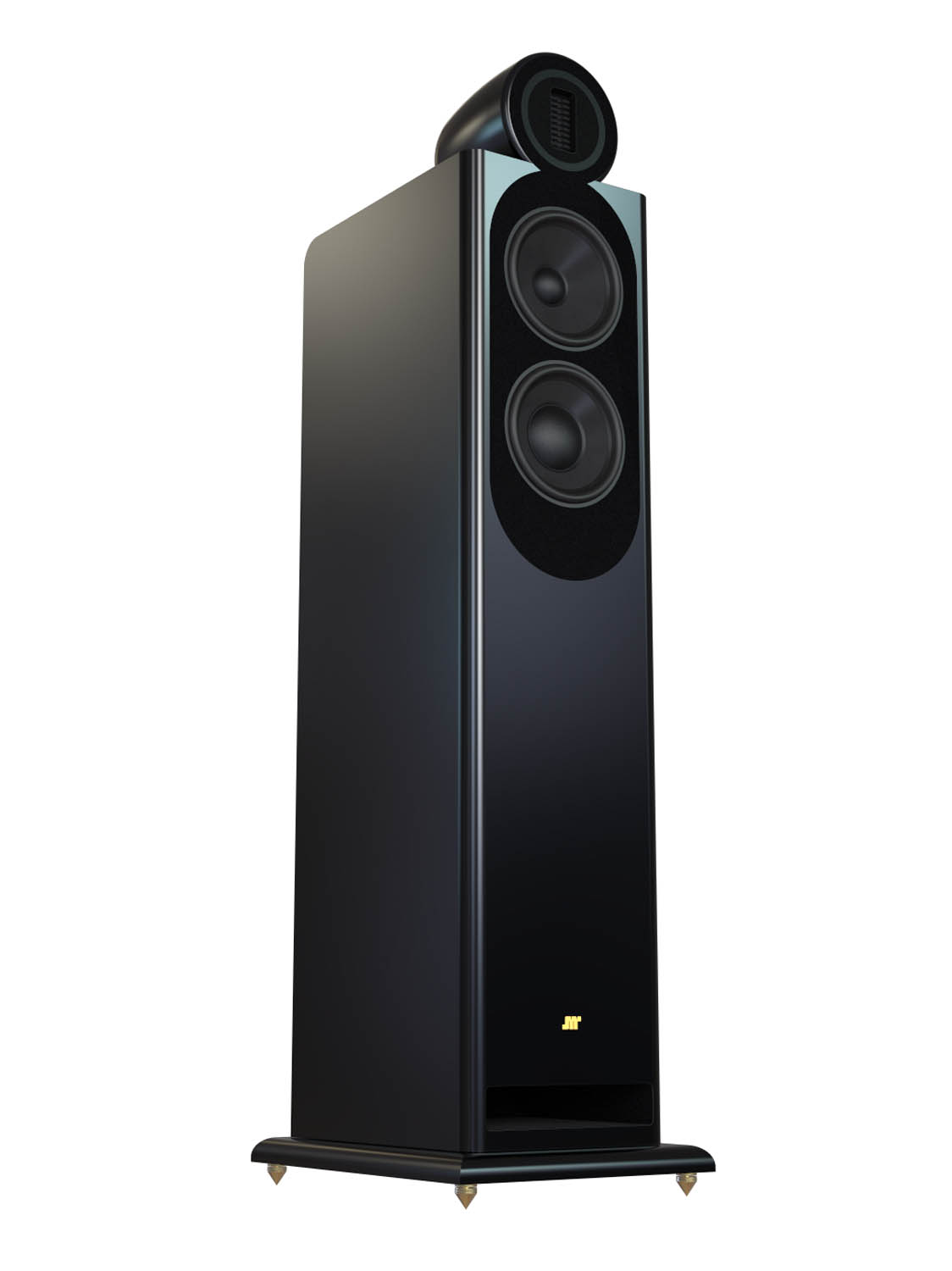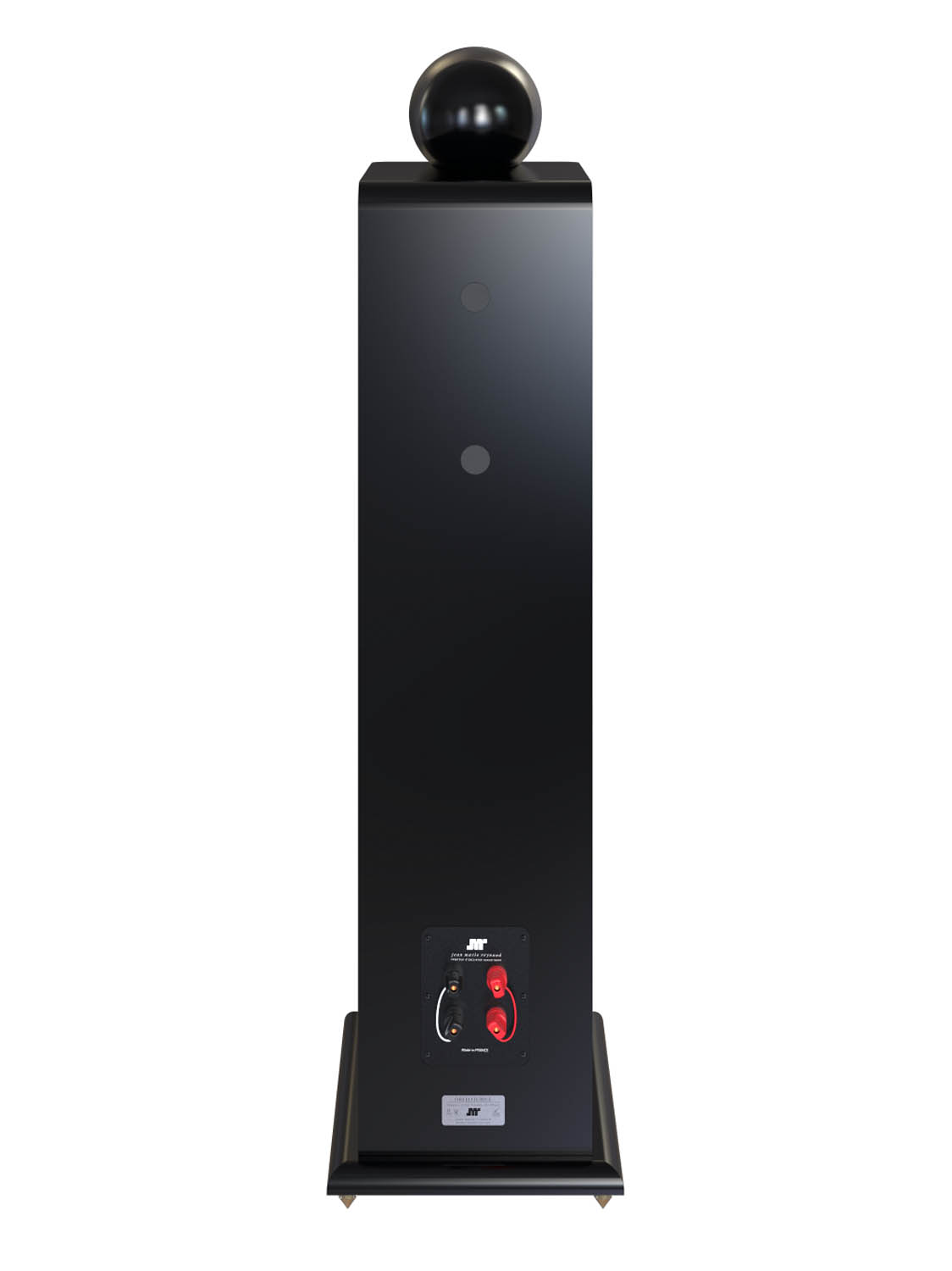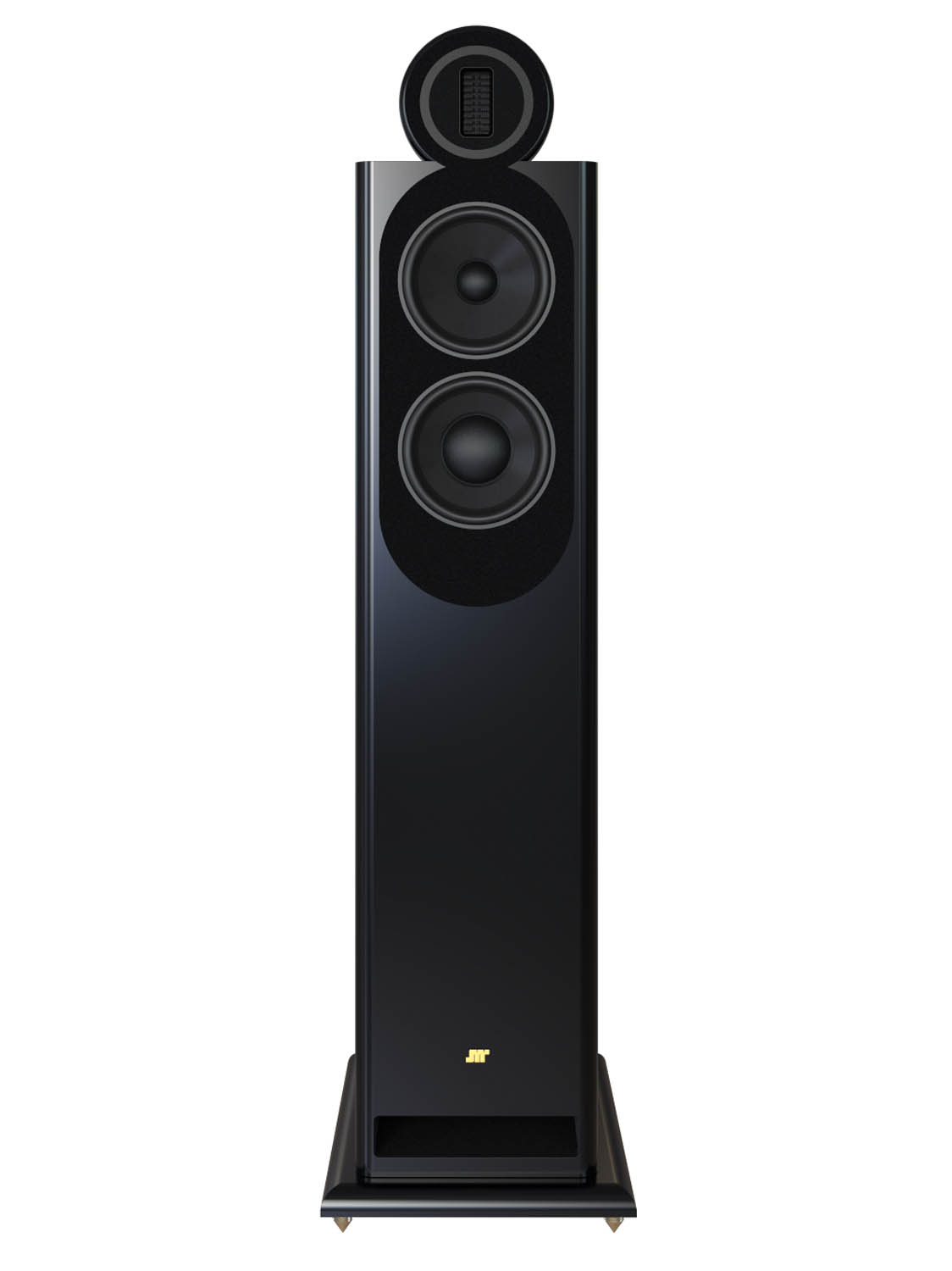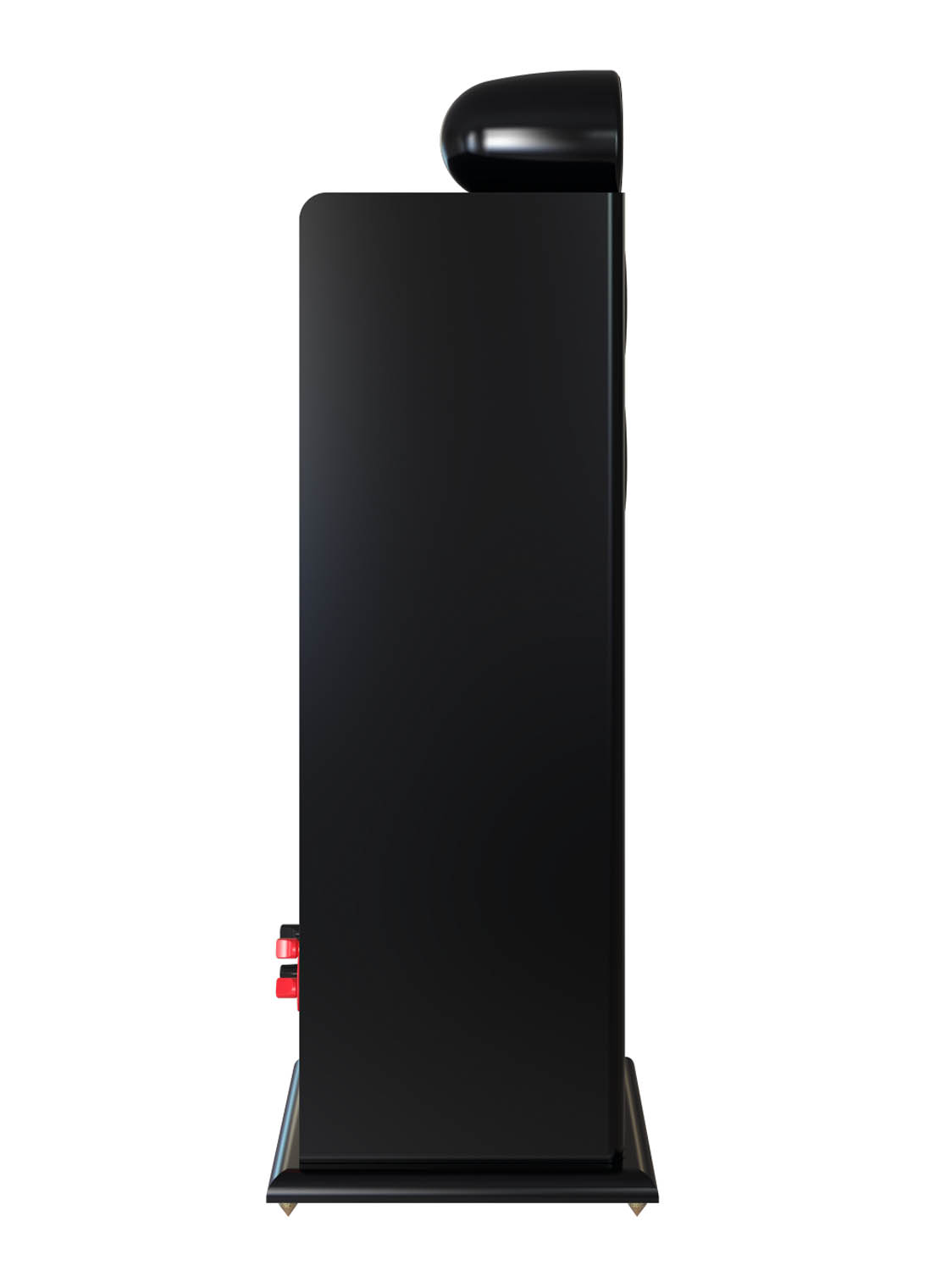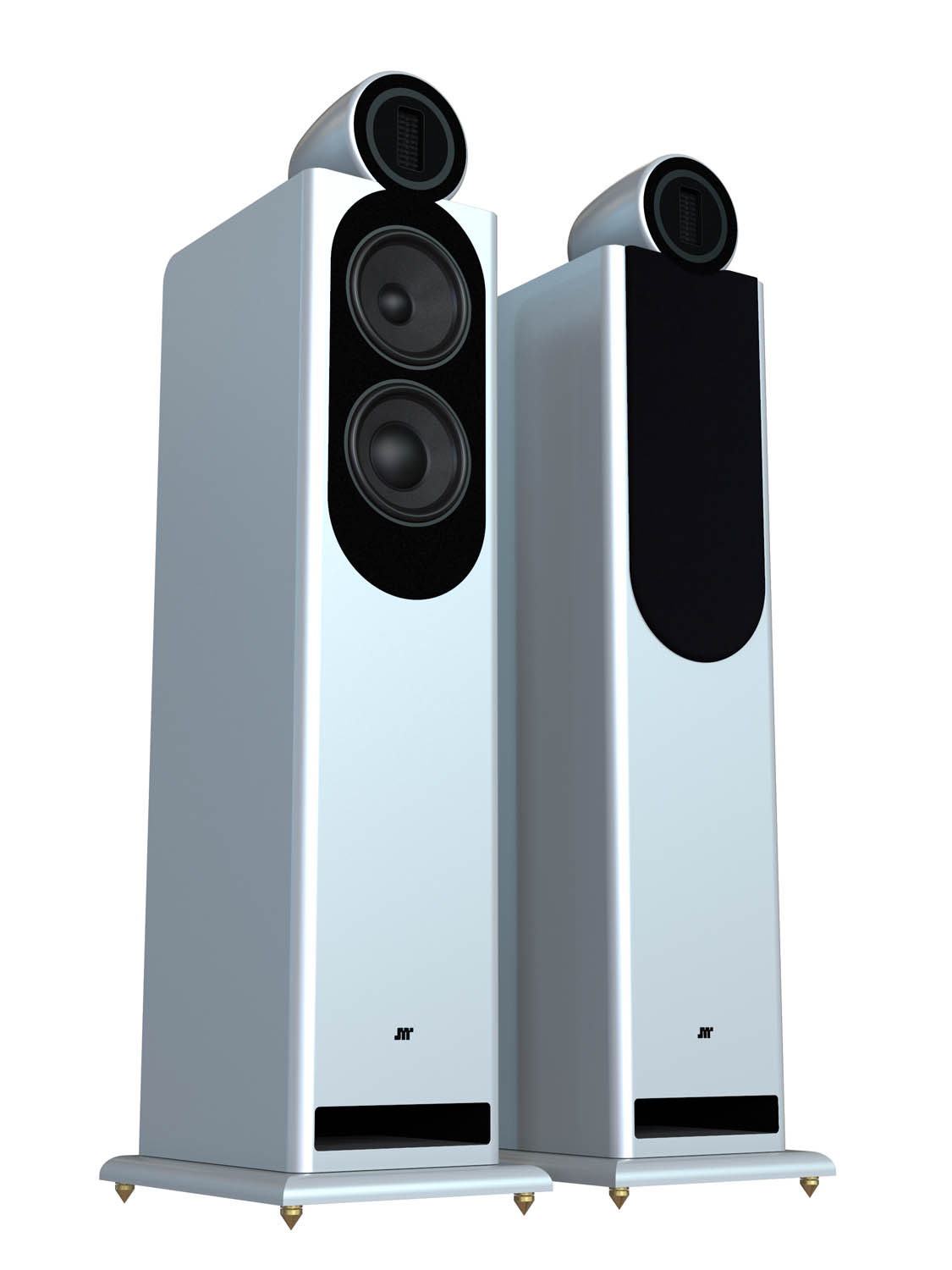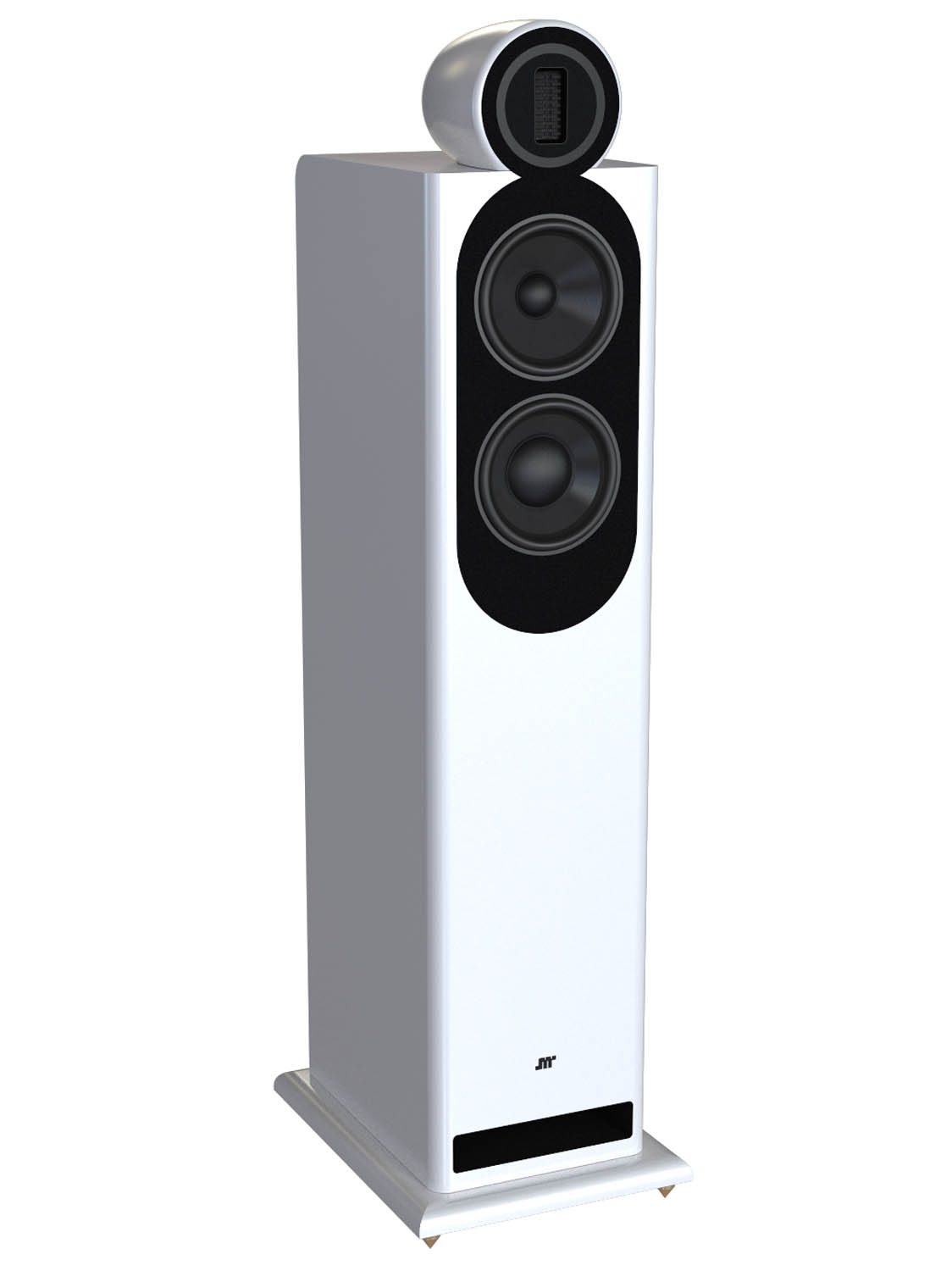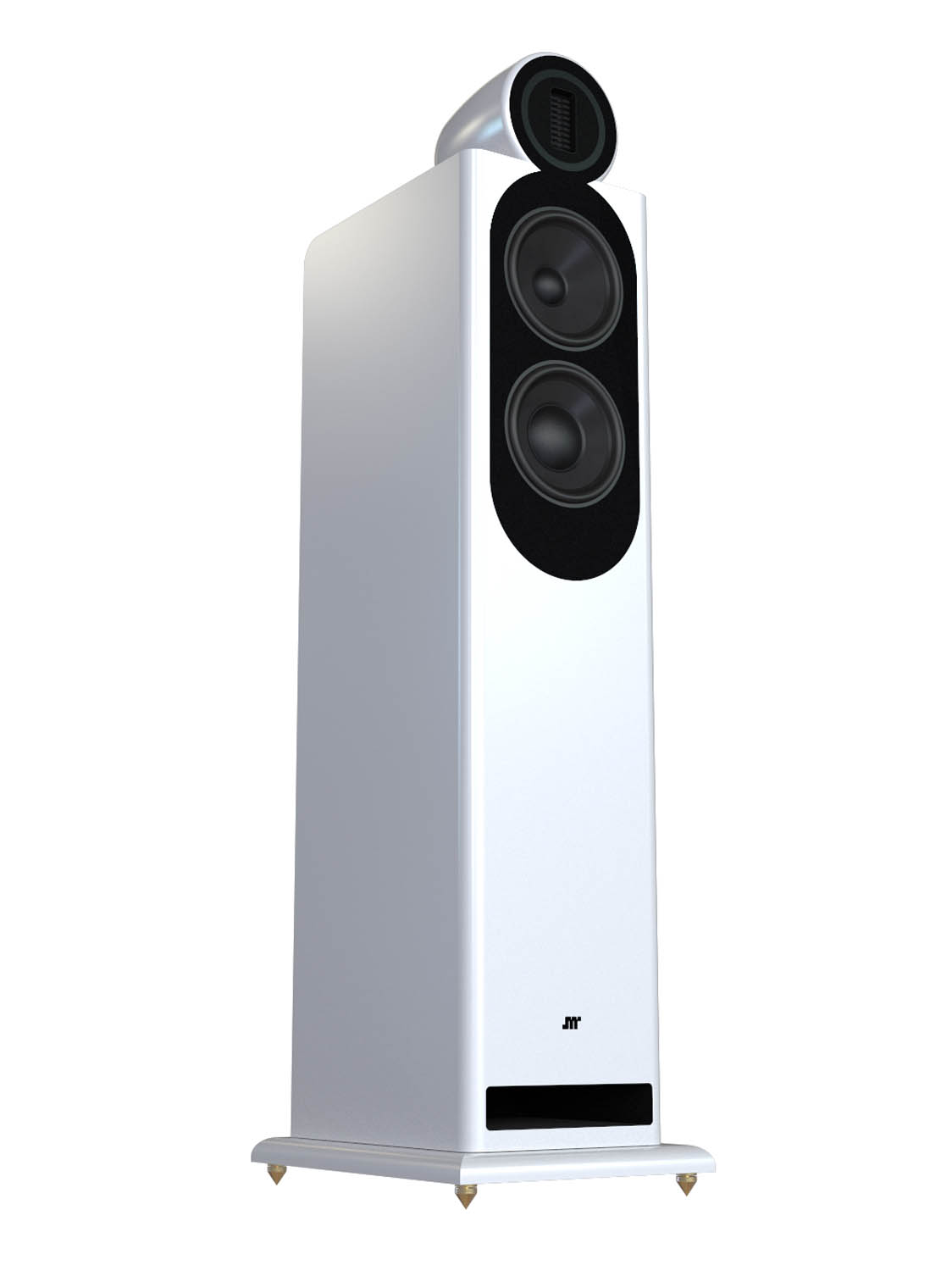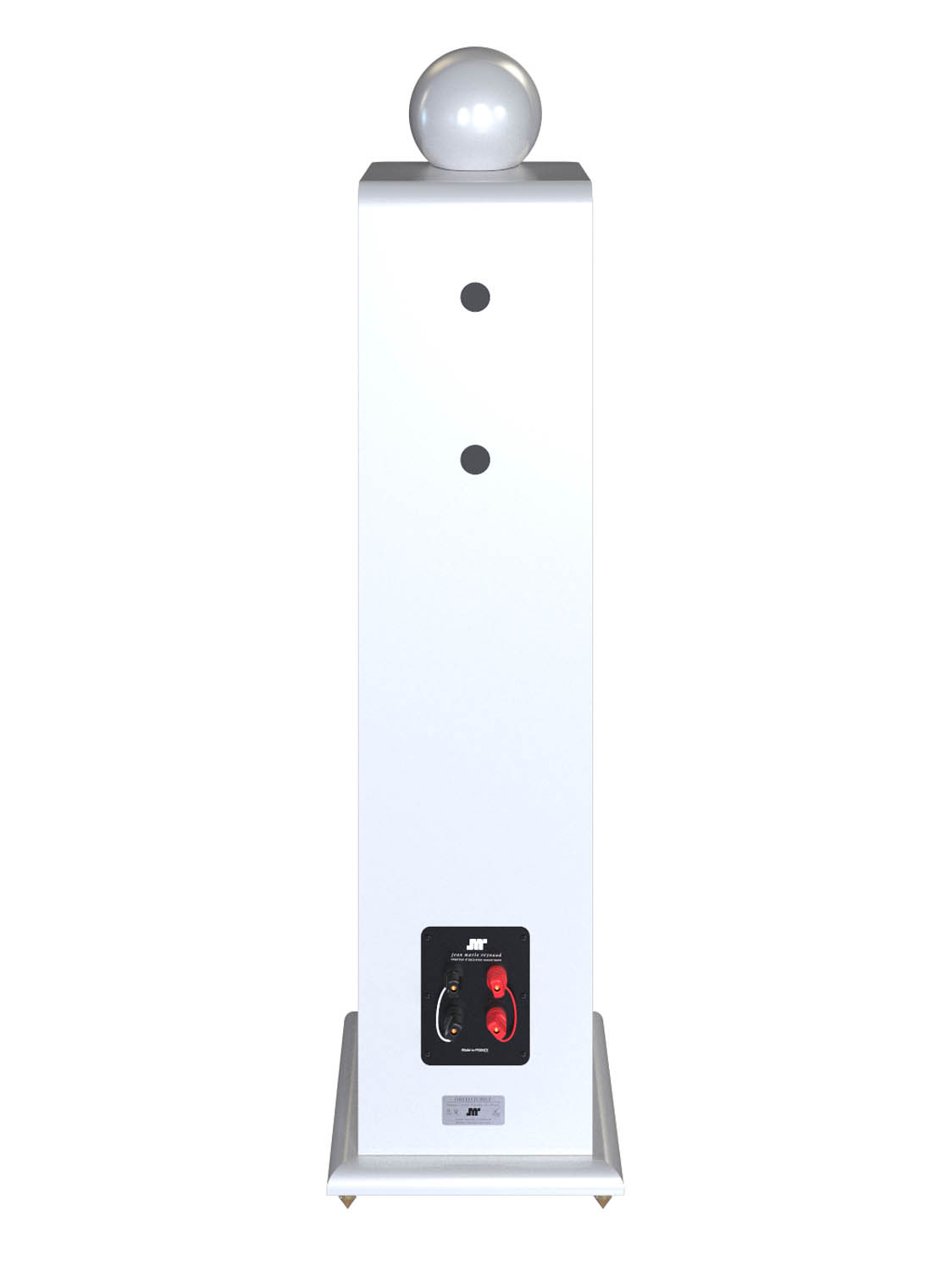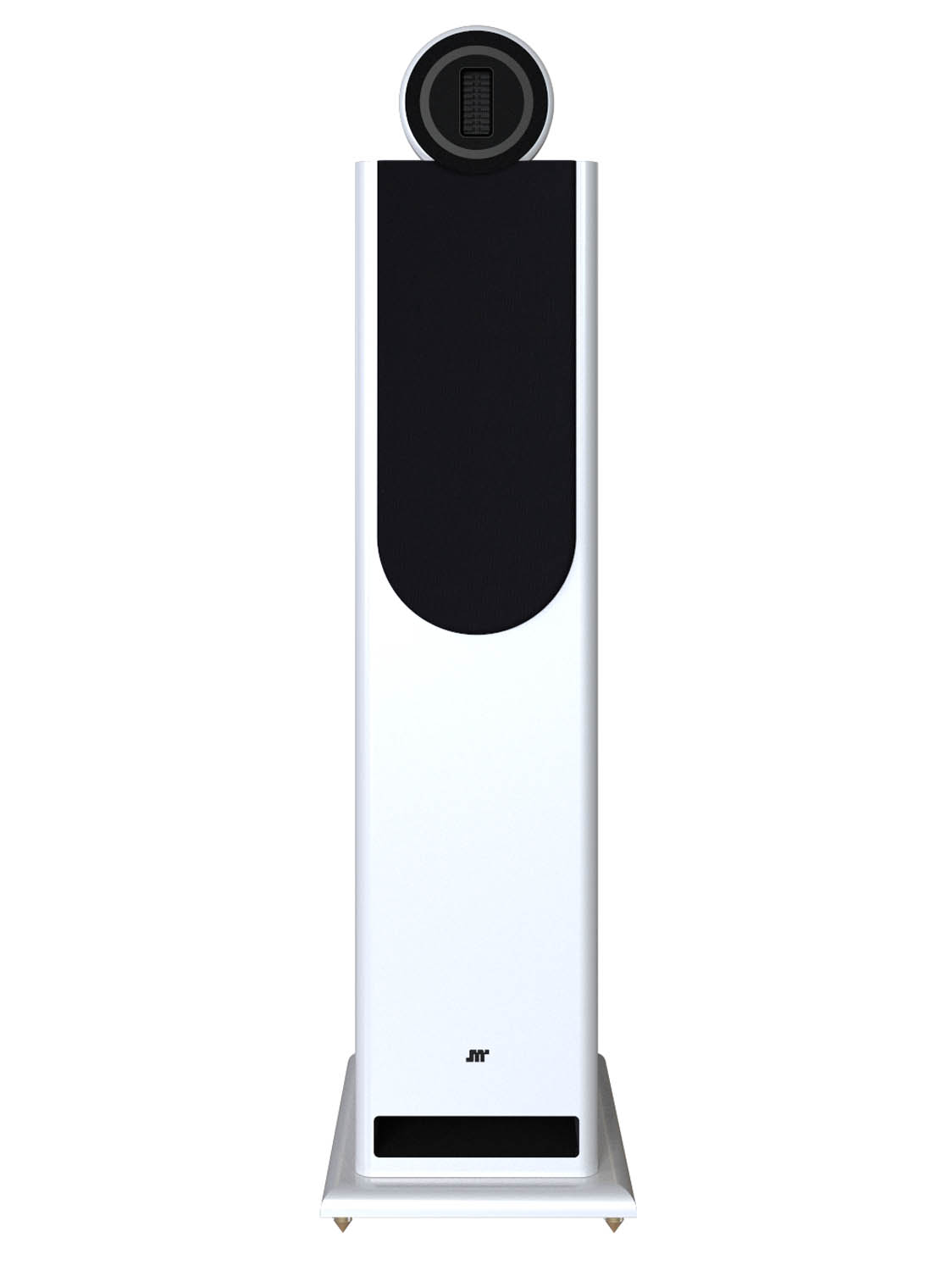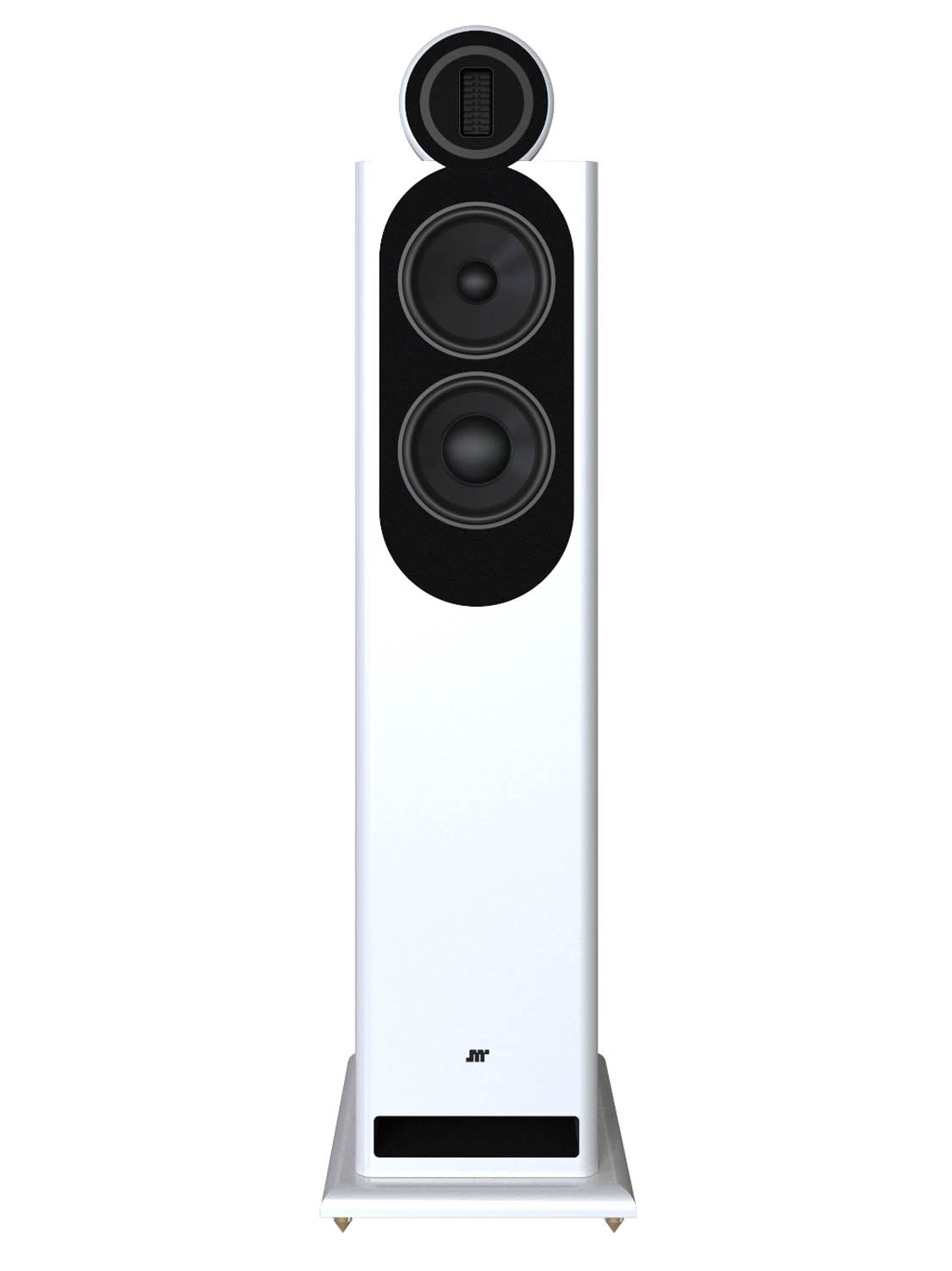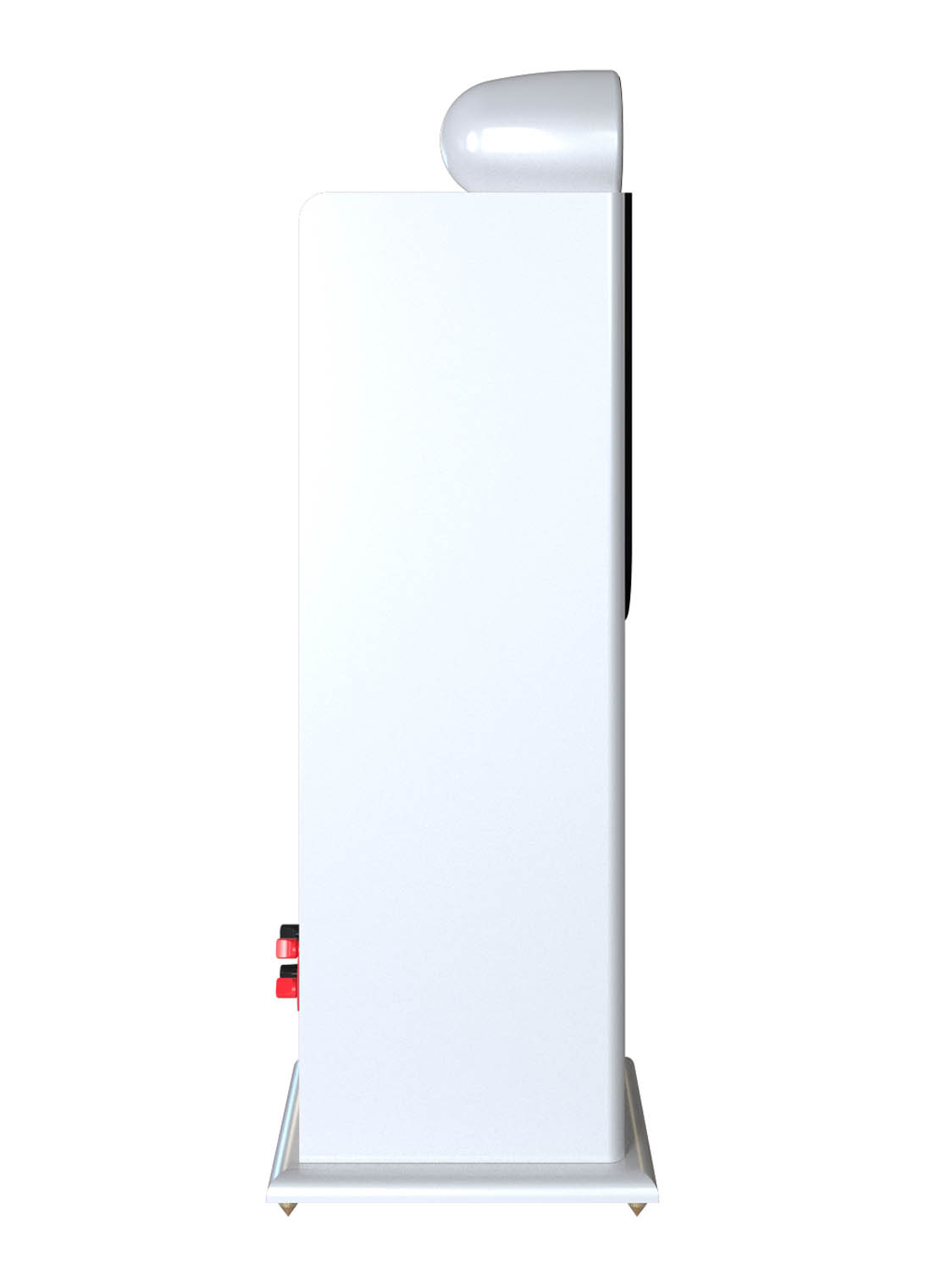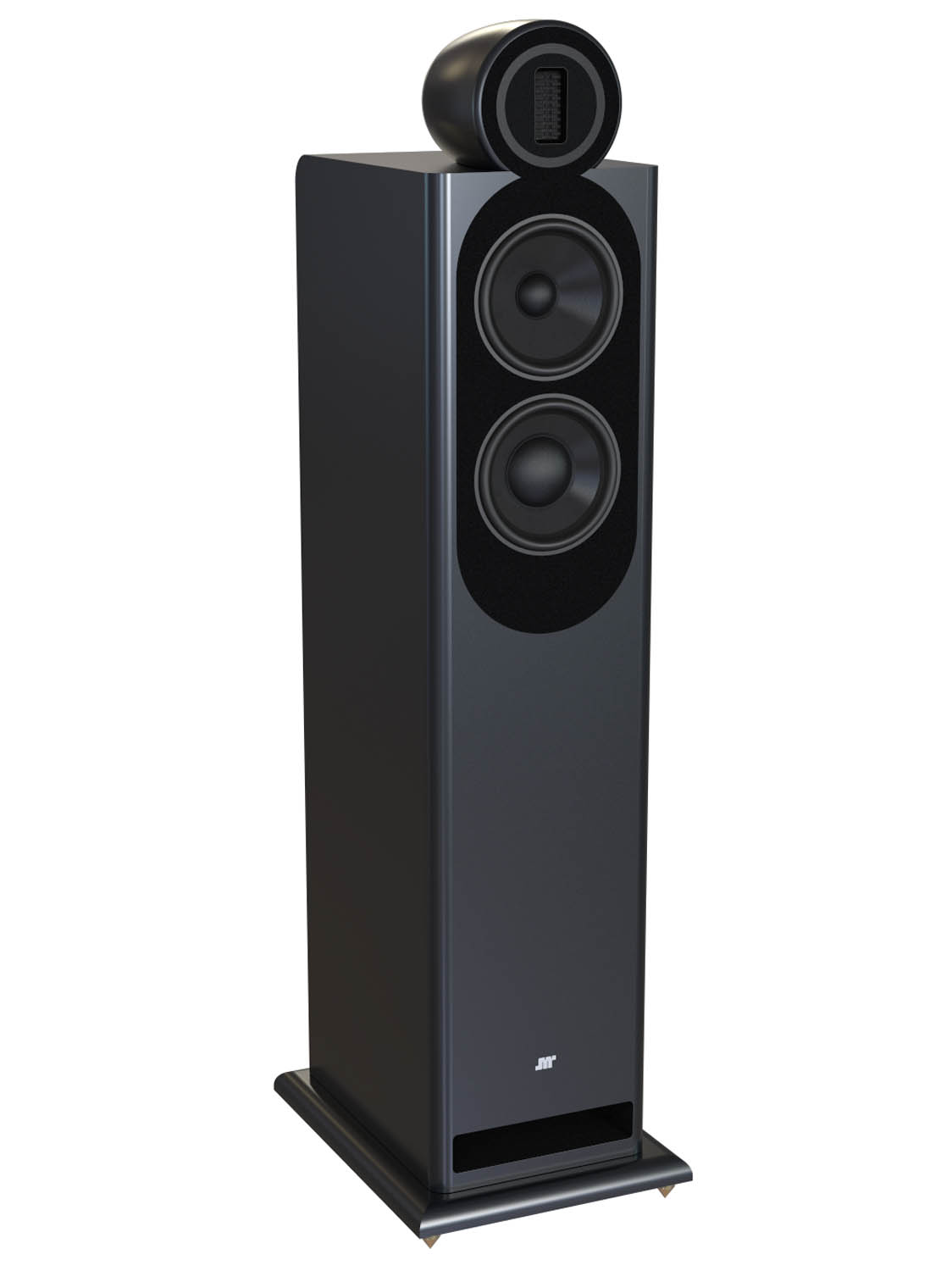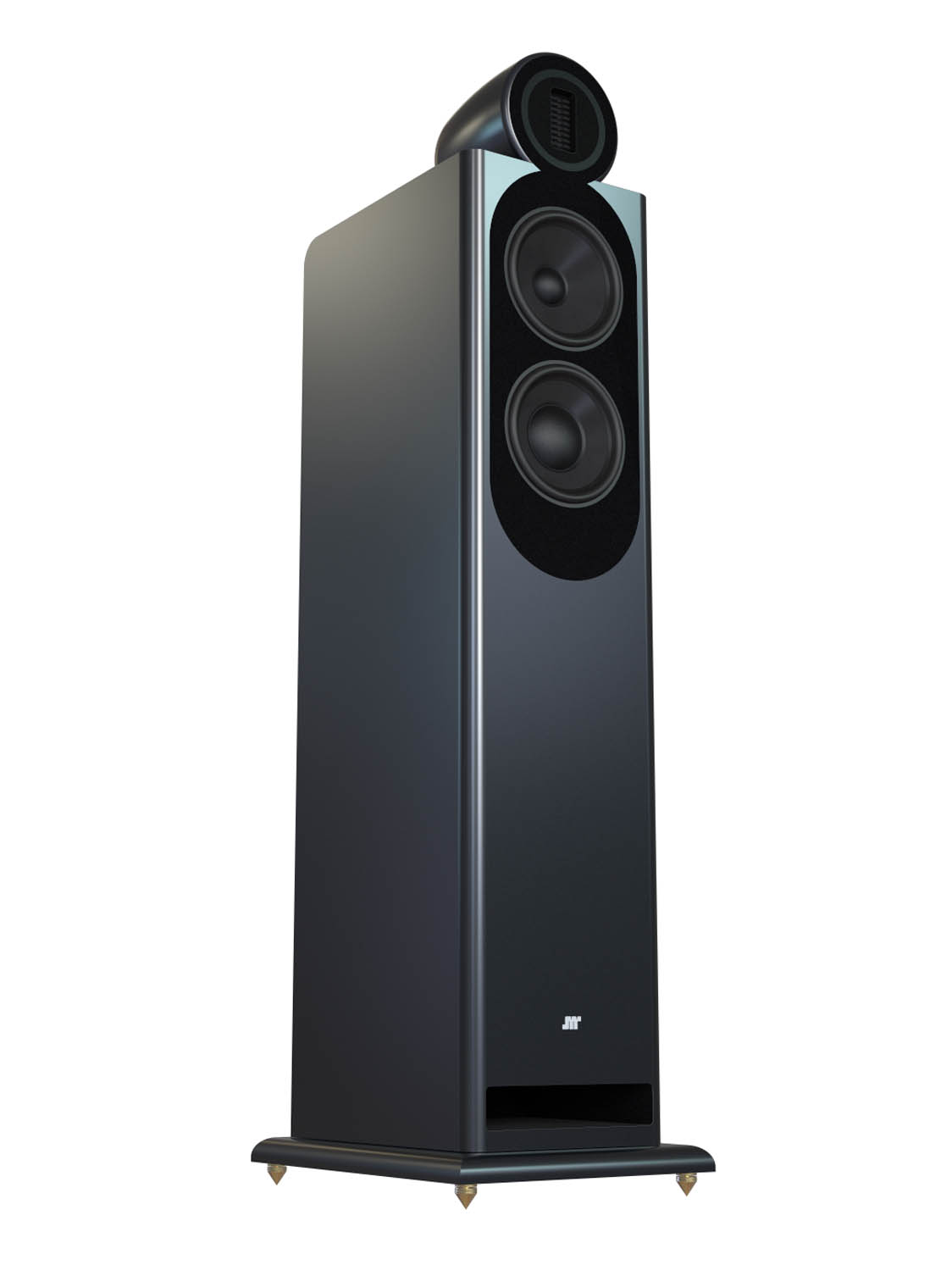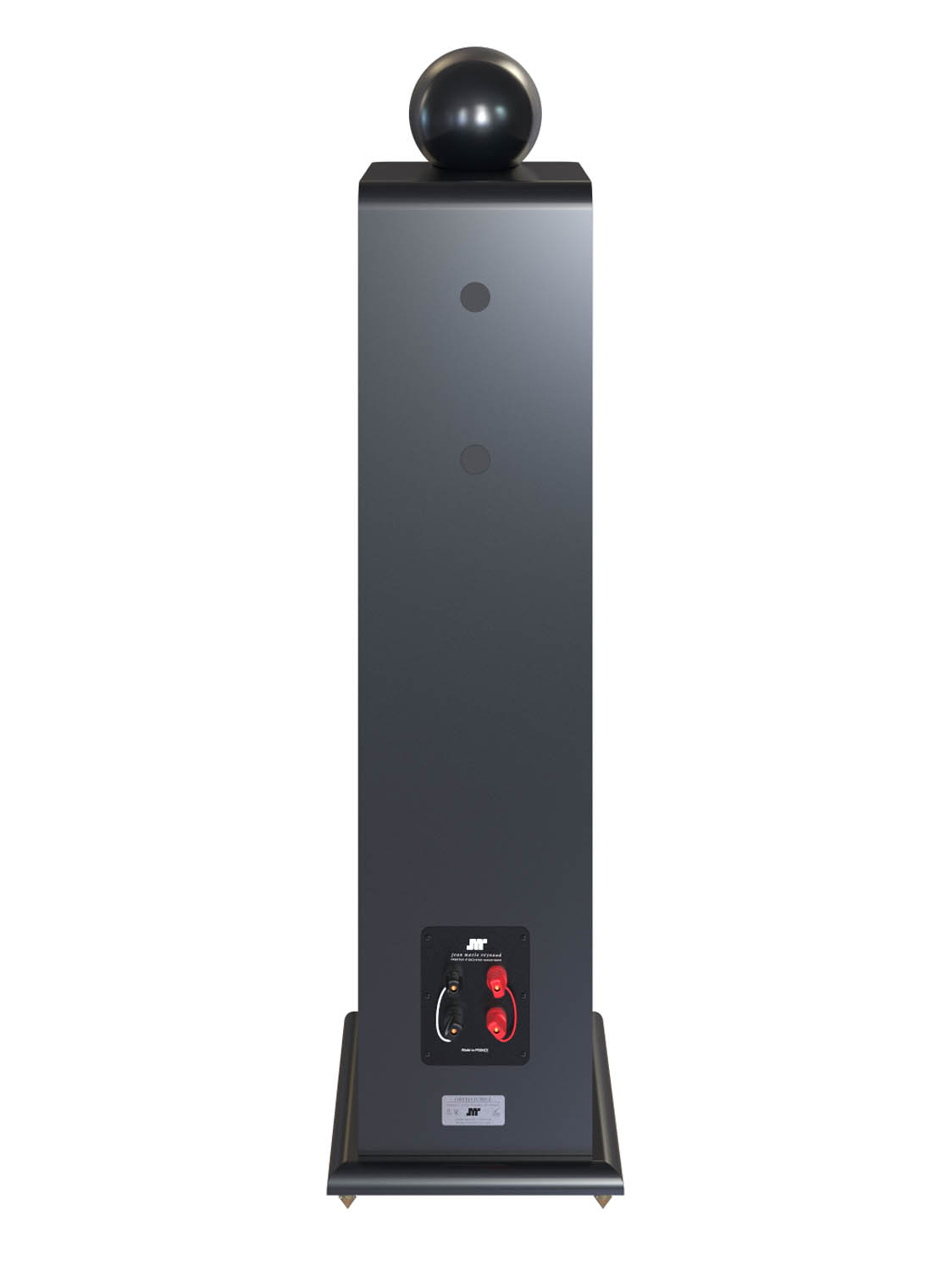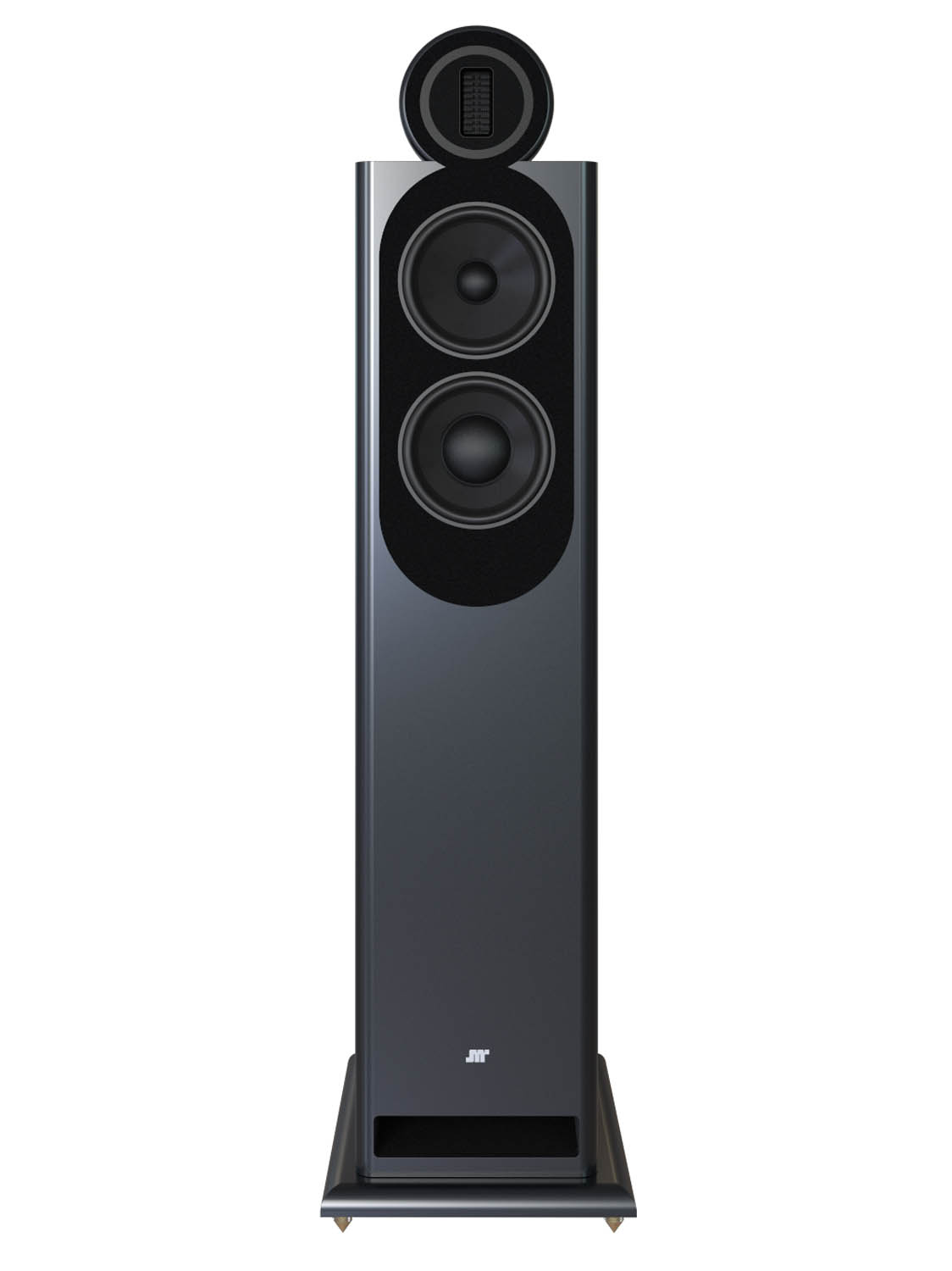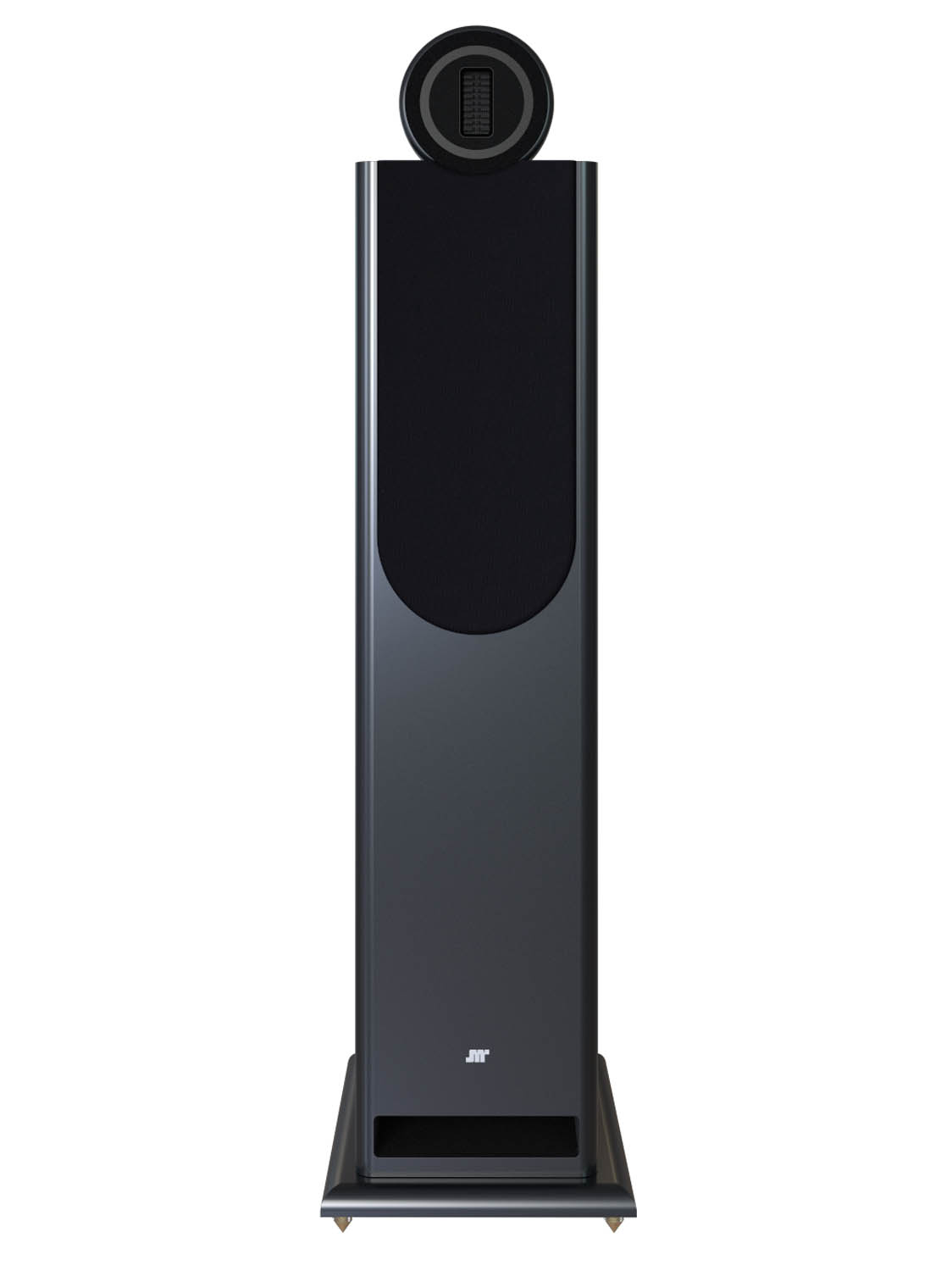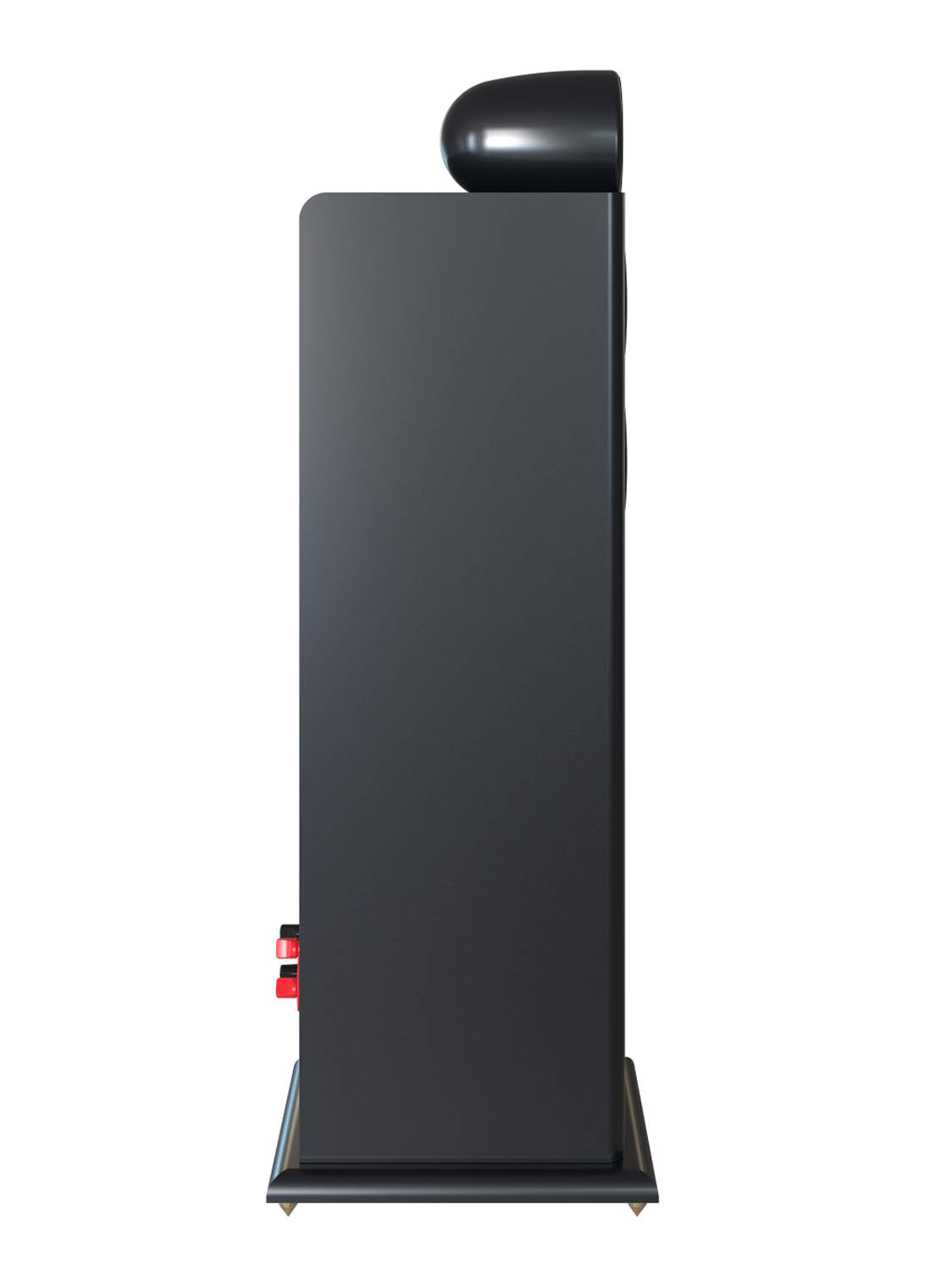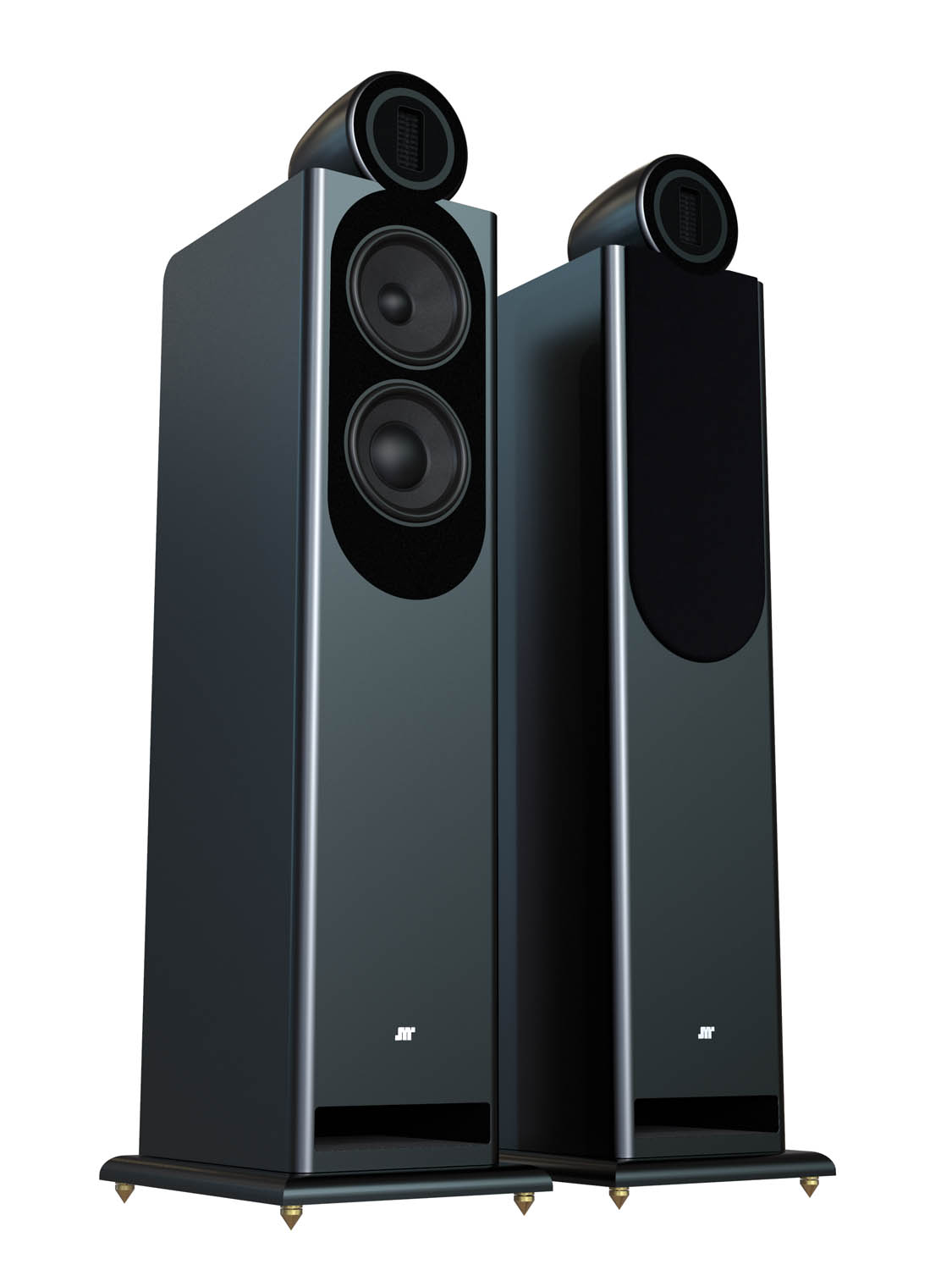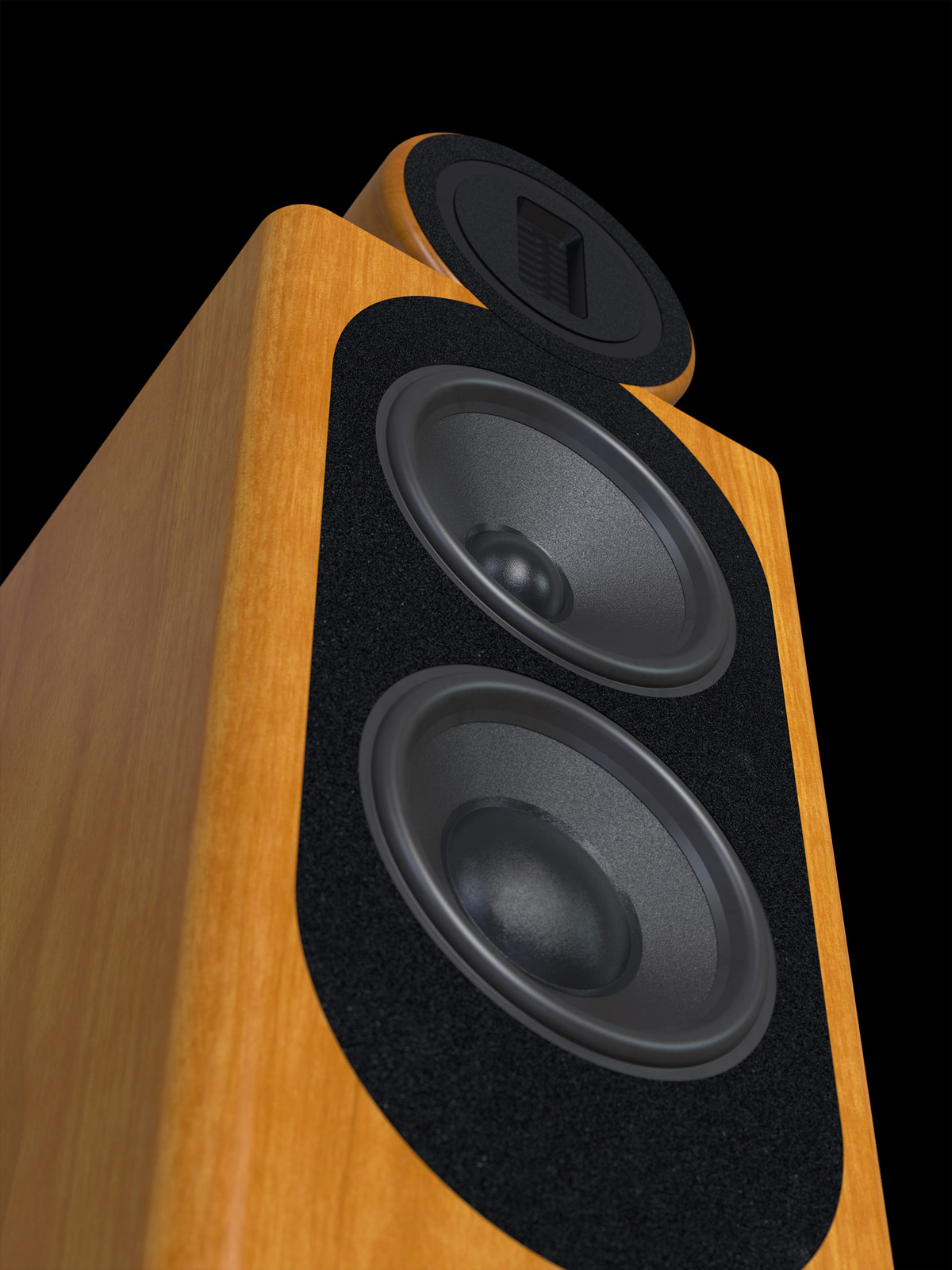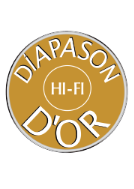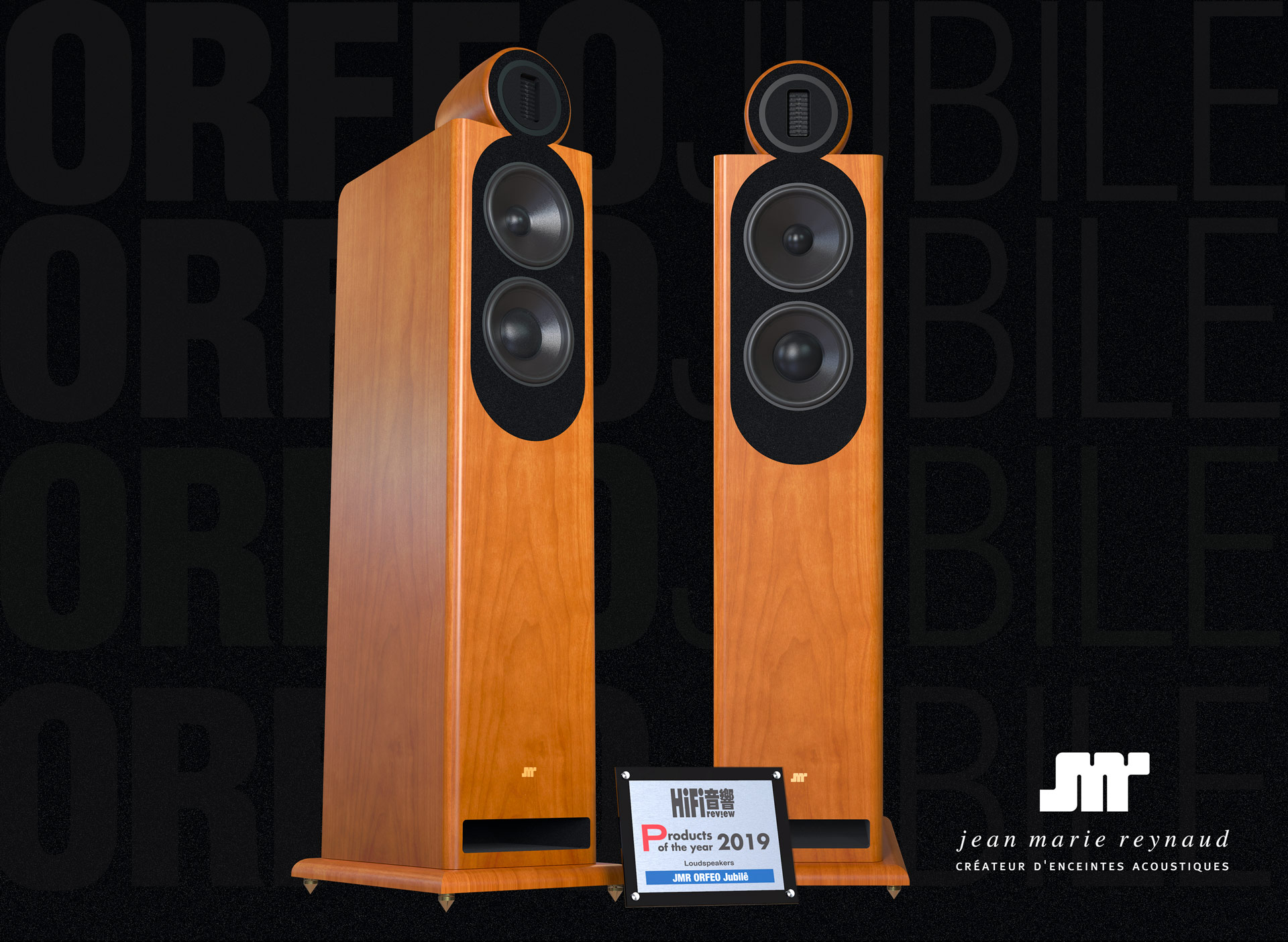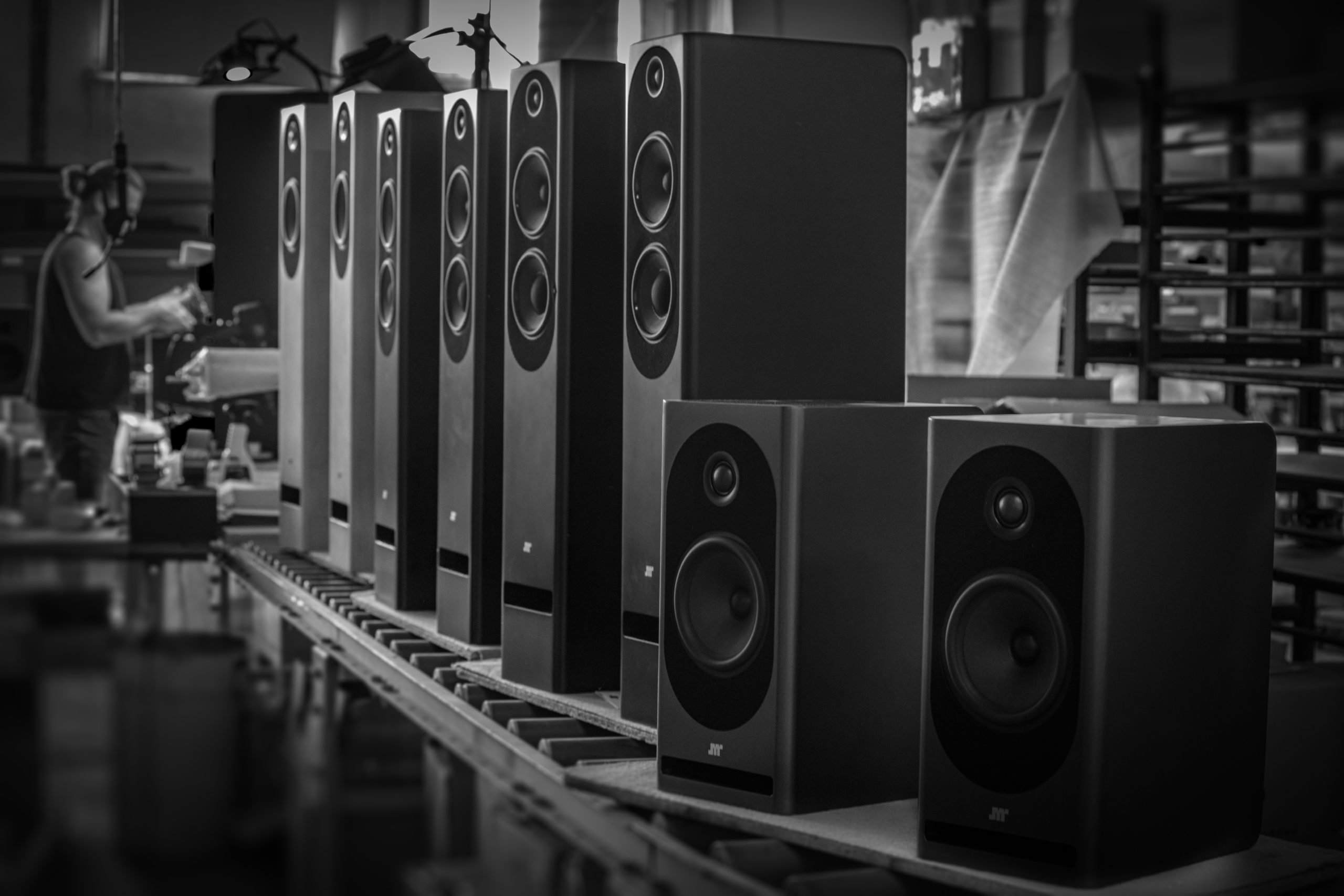Developed patiently and with great rigor, the ORFEO in this Jubilee version is the quintessence of JMR know-how.
Extremely linear and generating a signal of a constant density whatever the register, it distils with a real ease a subtle musicality, without caricature, and very nuanced. Equally at ease with small acoustic ensembles as with the telluric loads of a symphony orchestra, it gives the impression of serenity coming from a system without limits.
The ORFEOJUBILE is not an improvement of the Supreme V2 version but a complete new development around the same concept. A relatively compact 2.5 way loudspeaker with a very high level of timbre and energy.
All the technical elements have been revised: Load, speakers, filtering and even its aesthetics. We find the silhouette of this new Jubilee line with a large fillet on the rear horizontal edge of the cabinet. It is also slightly more voluminous to match the tuning of its new perfectly optimized acoustic load and tuned even lower. The harmonic richness that characterizes JMR products is perfectly respected, without exaggeration and without sacrificing the transparency and immediacy necessary for a good reading of the musical message. The interpretation of a work, even a very complex one, becomes surprisingly easy to understand and listening is effortless, quite natural. Technically very sophisticated it was as usual sharpened and validated by long hours of listening. This makes it possible, where measurement no longer shows anything, to optimize its performance even better, bearing in mind that a system, however elaborate it may be, must above all be a true vector of emotions.
Thanks to its very good efficiency and the exemplary linearity of its impedance curve, the ORFEOJUBILE is easy to feed. However, it requires very well made electronics with well dimensioned power supplies in order to take full advantage of its very nice vivacity and its impressive dynamic capacities. Although it has a very wide frequency response in the low end of the spectrum, the ORFEOJUBILE is easy to position, even in a relatively small room. The proportions of its geometry and its extremely meticulous finish make it a precious object that can be easily integrated into any interior, whether classic or contemporary.







